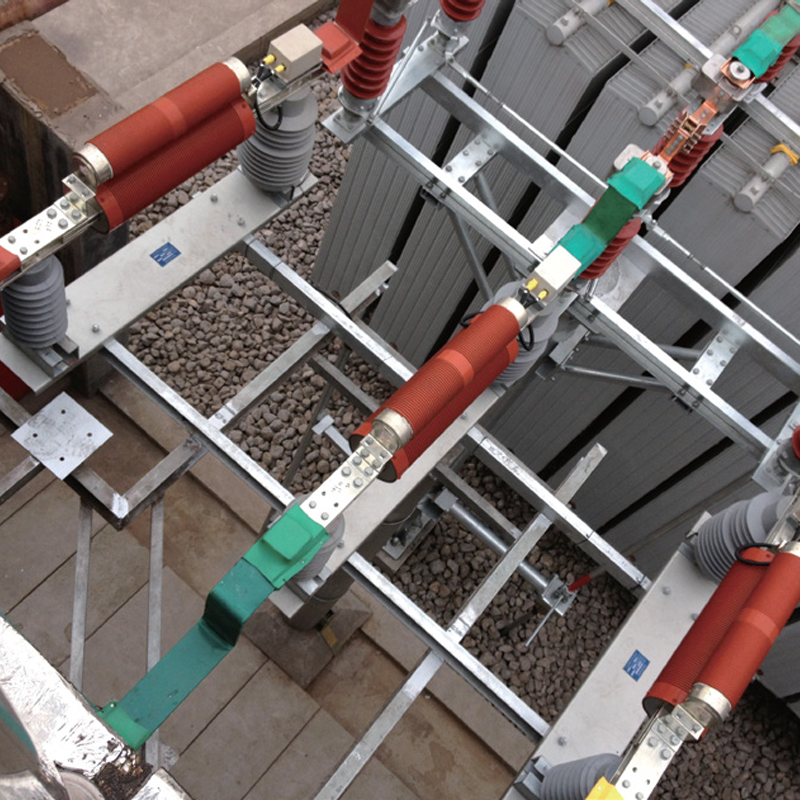| Brand | RW Energy |
| Model NO. | UFCL -limiter |
| Rated voltage | 7.2kV |
| Rated normal current | 6000A |
| Rated frequency | 50/60Hz |
| Mounting type | 一体式 |
| Power frequency withstand voltage | 20kV/1min |
| lightning impulse withstand voltage | 60kV |
| Series | UFCL Series |
The UFCL-limiter, a fault current limiter based on pyrotechnic technology, is a technological answer to the problem of higher levels of short circuit current where system augmentation takes place but replacing of whole protection switchgear is not feasible.Faults in electrical power systems are inevitable. Apart from the damages in the vicinity of the fault - e.g. due to the effects of an electric arc - the fault currents flowing from the sources to the location of the fault impose high dynamical and thermal stresses on equipment like bus-bars, transformers, and switchgears. The circuit-breakers further have to be capable of (selectively) interrupting the currents associated.
But, a growth in the generation of electrical energy and an increased interconnection of the networks lead to higher fault currents. Especially, the continuous growth in the generation of electrical energy has the consequence that networks approach or even exceed their limits with respect to the short-circuit current withstand capability. Therefore, there is a considerable interest in devices which are capable of limiting fault currents. A fault current limiter can trip at the very early stage of first rise and limit the first peak of the fault current passing through it.
The use of UFCL-limiters allows equipment to remain in service even if the prospective fault current exceeds its rated peak and short-time withstand current and in case of circuit breakers also its rated short-circuit making and breaking current. Replacement of equipment can be avoided or at least shifted to a later date. In case of newly planned networks UFCL-limiters allow the use of equipment with lower ratings which renders possible considerable cost savings. In case of newly planned networks UFCL-limiters allow the use of equipment with lower ratings which renders possible considerable cost savings.
Sometimes, UFCL-limiter is the only solution
As shown in Figure 1 below, the UFCL-limiter is installed in the bus-tie section and is series-connected to the bus coupling circuit-breaker (CB). In the event of a short-circuit in the outgoing feeder, the prospective short-circuit current flowing through the outgoing feeder CB (Ik") may reach 80kArms, which is equivalent to a peak current of 200kAp. This exceeds the ratings of the CB (40kArms and 100kAp). In other words, the CB is unable to provide protection against this high peak short-circuit current and the operation speed of the CB is too slow. This will lead to serious mechanical and thermal stress and eventually equipment failure.

However, thanks to the high operation speed and current limiting capabilities of the UFCL-limiter, it is possible to resolve this issue without upgrading all the equipment in the system. By installing the UFCL-limiter on the strategic position of the bus-tie, the short-circuit current i2 contributed by T2 is limited at the rise of the first cycle and interrupted before the prospective current i2 reaches its peak. The total (peak) short-circuit current flowing through the CB of the fault circuit is then kept below 100kAp (i1 + i2 <100 kAp), which is the rated peak withstand current of the CB. Therefore, the CB can withstand the fault current and trip to clear the fault safely.
In comparison with complex conventional solutions, the UFCL-limiter has both technical and economic advantages when used in transformer or generator feeders, in switchgear sectionalizing and connected in parallel with reactors. There is no need for customers to upgrade all the switchgear, bus-bars cables, etc.
The advantages of the use of a UFCL-limiter in a network are:
• Reduction of the short-circuit current of the system (compared to the short-circuit current with closed tie circuit breaker)
• Reduction of voltage sags and flicker due to the lower total source impedance
• Reduction of harmonics due to the lower total source impedance
• Higher system availability due to the parallel connection of the feeding generators and transformers
• Higher loads possible in a sub-system (higher than the ratings of the feeding generators and transformers in that sub-system)
UFCL-limiter switchgear
Rated voltage |
kV |
7.2 |
12 |
17.5 |
24 |
36 |
40.5 |
Rated current |
A |
1250-6300 |
1250-4000 |
1250-3150 | |||
Rated frequency |
Hz |
50/60 |
|||||
Rated power-frequency withstand voltage |
kV |
20 |
28 |
38 |
50 |
70 |
95 |
Rated lightning impulse withstand voltage |
kV |
60 |
75 |
95 |
125 |
170 |
185 |
Rated auxiliary voltage |
V |
AC220/230 |
|||||
Installation type |
Cabinet type | ||||||
UFCL-limiter in loose equipment supply
Rated voltage |
kV |
7.2 |
12 |
17.5 |
24 |
36 |
40.5 |
Rated current |
A |
1250-6300 |
1250-4000 |
1250-3150 | |||
Rated frequency |
Hz |
50/60 |
|||||
Rated short-circuit breaking current |
kA rms |
Up to200 |
|||||
Rated power-frequency withstand voltage |
kV |
20 |
28 |
38 |
50 |
70 |
95 |
Rated lightning impulse withstand voltage |
kV |
60 |
75 |
95 |
125 |
170 |
185 |
Tripping time |
ms |
<1 |
|||||
Total operating time |
ms |
<10 |
|||||
Peak current limiting ratio |
% |
15-50 |
|||||
Rated auxiliary voltage |
V |
DC 110/220;AC110/220/230 |
|||||
Installation type |
Install in the form of loose parts | ||||||
If you need to know about more parameters and application, Please check the model selection manual.↓↓↓







